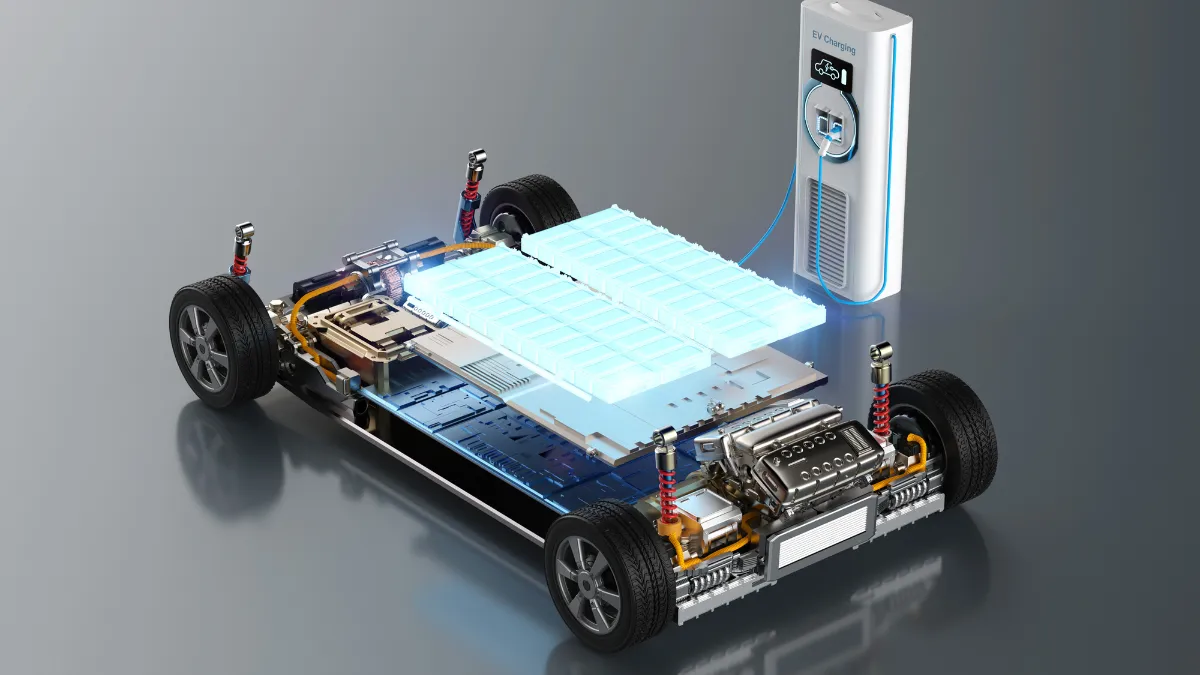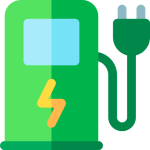
For decades, the electric vehicle has been defined by the battery. Its range, its charging time, and crucially, its lifespan. A car is designed to last for years, perhaps a decade or more, but its most expensive component—the battery pack—has historically been the subject of a much shorter, more concerning expiry date.
Now, one of the world’s largest and most influential automakers is challenging that paradigm with an astonishing claim that has sent shockwaves through the industry. Toyota is reportedly targeting a monumental 40-year lifespan for its next-generation solid-state batteries (SSBs).
If this goal is achieved, it won’t just be an improvement—it will be a revolution that redefines the very concept of car ownership, sustainability, and the entire energy ecosystem. This is not merely an engineering update; it’s a radical vision for the future of mobility.
🚀 Beyond the Hype: What is a 40-Year Battery?
The current generation of electric vehicle batteries, almost universally based on liquid-electrolyte lithium-ion chemistry, typically come with warranties in the range of 8 to 10 years, often guaranteeing around 70-80% capacity retention over that period. Toyota’s ambition, revealed by Keiji Kaita, president of their Carbon Neutral Advanced Engineering Development Center, is to reach 90% capacity retention after a stunning four decades of use.
This isn’t just about avoiding a costly battery replacement; it’s about shifting the battery from a disposable component to a permanent, valuable asset.
The Core Technology: Solid-State Advantage
The foundation of this claim lies in the shift from liquid to solid electrolytes.
- Current Lithium-ion: Uses a liquid electrolyte, which is flammable and prone to degradation over time and with high-speed charging. This degradation process limits the overall life and capacity of the battery.
- Solid-State Batteries (SSBs): Replace the flammable liquid with a non-flammable solid material (like a ceramic or polymer). This fundamental change offers immense benefits:
- Longevity: The solid electrolyte is far more chemically and thermally stable, dramatically reducing the breakdown that curtails the life of traditional Li-ion cells.
- Safety: The absence of a flammable liquid eliminates the risk of thermal runaway and fire, improving overall safety.
- Energy Density & Charging: SSBs can support higher energy density and much faster charging rates—Toyota is also targeting over 1,000 km (621 miles) of range and a 10-minute charge time for its high-performance SSBs.
♻️ The End of the Battery Scrappage Crisis
The 40-year lifespan is not just a technological feat; it is a profound move towards circular economy and sustainability.
Multi-Car Utility
The most significant consequence of a multi-decade lifespan is that a single battery pack could potentially outlive the vehicle it’s first installed in—two or even three times over.
“Even if the vehicle is maybe scrapped—we can remove the battery to a new vehicle, two times, maybe three times [over its lifespan].”
— Keiji Kaita, President of Toyota’s Carbon Neutral Advanced Engineering Development Centre
Imagine buying a new EV and effectively bringing your valuable, 90%-capacity battery pack along with you. This drastically changes the economics of EV ownership. The initial high cost of the SSB, which Toyota acknowledges will be substantial, is offset by its incredible long-term value.
Reducing the Carbon Footprint
By enabling one battery to serve the purpose of four liquid-ion batteries over four decades, Toyota estimates this technology could reduce the overall carbon footprint of battery production by up to 75%. Since battery manufacturing is the most carbon-intensive part of an EV’s life cycle, this longevity addresses a core criticism of electric mobility. It fundamentally lessens the demand for new resource mining, transforming the environmental equation for EVs.
🤔 The Scepticism and The Roadmap
Toyota’s claims, while exciting, are met with a healthy degree of scepticism. The automotive giant has been the world leader in solid-state battery patents for years, but its long-anticipated production date has been repeatedly pushed back. The “holy grail” of battery technology remains one of the most complex engineering challenges of our time.
The Challenges Remaining
- Mass Production and Cost: Scaling the complex manufacturing process of SSBs is incredibly difficult. The materials are costly, and creating a stable, defect-free solid-solid interface between the electrodes and electrolyte at a high volume remains the biggest roadblock.
- Mechanical Stability: Solid electrolytes, particularly ceramics, can be brittle. Ensuring the battery pack can withstand the constant stress, vibration, and temperature fluctuations of real-world driving for 40 years is a huge durability hurdle.
- Dendrite Formation: Even in solid-state cells, lithium metal anodes can still form dendrites (root-like structures) during charging that can puncture the electrolyte and cause a short-circuit, though the solid material mitigates this better than liquid.
Toyota’s Path to Production
Despite the challenges, Toyota remains steadfast in its ambitious timeline, which has recently been reinforced by new partnerships:
| Target | Metric | Timeline | Context |
| First Launch | EV with Solid-State Battery | 2027 or 2028 | Planned for initial rollout in premium/high-performance models (Lexus/Century) to absorb higher initial cost. |
| Performance | Driving Range | >1,000 km (621 miles) | Paired with an approximate 10-minute fast charge time (10-80% State of Charge). |
| Mass Production | Partnership & Scaling | Ongoing | Collaboration with partners like Sumitomo Metal Mining (for cathode materials) and Idemitsu Kosan (for solid electrolyte raw materials) to secure the supply chain and scale production. |
🌍 A True Game-Changer for Global Electrification
A 40-year battery is not just a win for Toyota; it is a disruptive force for the entire global move towards electrification.
1. Total Cost of Ownership (TCO)
The high price of current EV batteries is the primary factor driving up the TCO of electric cars. A battery with a 40-year lifespan effectively makes the vehicle’s “fuel tank” last for multiple generations of cars, radically improving the long-term financial appeal of EVs, especially in markets driven by value and durability.
2. Second-Life Applications
Batteries that still retain 90% capacity after two decades in a vehicle are immensely valuable for grid storage and home energy systems, significantly more so than today’s retired units. This ensures a more robust and lucrative “second life” for the energy packs, further cementing their value as a permanent asset.
3. Reasserting Toyota’s EV Leadership
Toyota has faced criticism for being slow to adopt pure battery-electric vehicles, often championing hybrids and hydrogen instead. The successful launch of a 40-year solid-state battery would immediately catapult the company to the very forefront of EV technology, justifying its patient, long-term approach to battery development.
🔮 The Road Ahead
The promise of a battery that lasts as long as the internal combustion engine is a turning point. It moves the conversation away from range anxiety and charging speeds—problems that are being solved—to a more fundamental issue of asset longevity and true environmental sustainability.
Toyota’s 40-year battery is, in every sense of the word, a moonshot. It is a declaration that the company is not just interested in catching up to the EV pack, but in launching a new era of mobility entirely. If they can move this colossal aspiration from the lab to the production line by 2028, it will be hailed as one of the most important breakthroughs in automotive history.
The future of the electric car is not just about what it can do for 10 years, but what it can do for 40. Toyota is challenging the world to think bigger, and in doing so, is making a claim to own the electric century.
FAQs
What exactly is a solid-state battery?
A solid-state battery uses a solid material (ceramic, glass or polymer) as the electrolyte instead of the liquid electrolyte used in conventional lithium-ion cells. This can improve safety, increase energy density and reduce some degradation mechanisms – but it introduces new engineering challenges in manufacturing and mechanical stability.
When will Toyota put solid-state batteries into cars?
Toyota has publicly discussed initial SSB-equipped models in the late 2020s, with 2027-2028 commonly reported for limited, premium launches. Broader mass-market rollout would depend on manufacturing scale-up and cost reductions and therefore is likely to follow later.
Are 40‑year batteries realistic or just marketing?
The 40‑year figure is an aspirational target communicated by Toyota’s engineering leadership (90% capacity retention after decades). It points to the potential longevity of SSB chemistries but remains unproven at commercial scale and across decades of real-world use. Experts urge cautious optimism until long-duration field data are available.
Will solid-state batteries be cheaper than today’s lithium-ion packs?
Not initially. Early SSBs are expected to carry a price premium due to new materials, specialised manufacturing and lower initial yields. Costs are expected to fall with scale, process improvements and supply-chain development, but timing for parity is uncertain.
What does this mean for Australian EV owners now?
In the short term, not much will change overnight. EV buyers should continue to weigh existing options on range, charging ecosystem and warranties. Over the medium to long term, durable SSBs could lower lifetime costs, improve resale values and increase the attractiveness of EV ownership, while creating new opportunities for second-life energy storage across Australia.
About EV Evolution
EV Evolution is the leading online platform dedicated to Australian electric vehicle owners and enthusiasts. We foster a vibrant community, delivering essential EV news and insights, and enhancing user engagement through our innovative, AI-powered chatbot for dynamic discussions. Our mission is to empower Australian electric vehicle owners and enthusiasts by fostering a vibrant, AI-driven online community that connects, informs, and advances the nation’s electric vehicle landscape.




